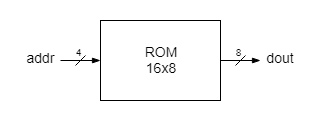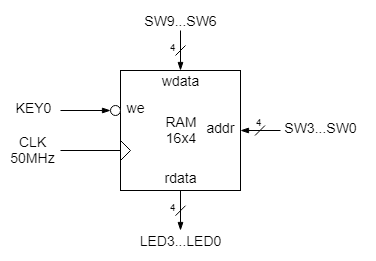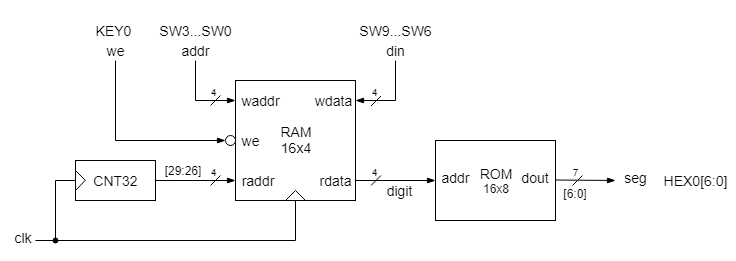Applications 8
Exercise 1
ROM - Read-Only Memory
Memory initialization task
Memory arrays may be initialized with predefined values from a text file using verilog system tasks $readmemb and $readmemh. $readmemb reads predefined values given in binary, while $readmemh is used if values are given in hexadecimal. These verilog system tasks have two mandatory arguments and two optional arguments, in the following order:
- initialization filename, given as a string (between double quotes)
- the memory array variable name
- the start address (optional)
- the end address (optional)
If the start and end addresses are not given, the memory array is initialized from the first address (address zero) until the last address or until the end of initialization file is reached.
If the memory initialization file, meminit.txt, resides in the project's folder, and the memory array to be initialized is mem inside the memory instance dut, the testbench may initialize the memory right at the beginning of the simulation:
initial $readmemb("../../meminit.txt", dut.mem);
If the initialization is intended to be done for the implemented memory, the initialization process must be placed inside the memory module, in which case the memory array name is just the variable array to be initialized:
initial $readmemb("../../meminit.txt", mem);
Memory initialization file
The initialization file is a text file with values written in binary (using 0 and 1 symbols) or in hexadecimal (using digits and letters a to f, either uppercase of lowercase). Values are separated by white spaces, tabs or newlines. Comments (started with // as in verilog) are ignored. An example of a binary initialization file:
// four values in binary text format
00000011
00001111
00111111
11111111
The same initialization sequence, but given as a hexadecimal text file:
// four values in hexadecimal text format
03
0f
3f
ff


